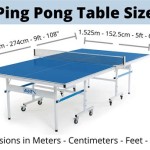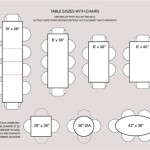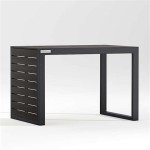Raised Bed Vegetable Garden Design Ideas: Essential Considerations
Creating a raised bed vegetable garden offers numerous advantages, from improved soil drainage and temperature to efficient space utilization. Here are some essential aspects to consider when designing your own raised bed vegetable garden:
Dimensions and Materials
Determine the size and height of your raised beds based on the available space and the vegetables you intend to grow. Generally, beds should be 4-6 feet wide, allowing for easy access from both sides. The height can range from 12-24 inches, depending on root depth requirements of the plants.
Choose durable and weather-resistant materials for the bed frames. Common options include treated lumber, cedar, redwood, or concrete blocks. Ensure the wood is treated for outdoor use to prevent rot and insect damage.
Location and Sunlight
Select a location that receives ample sunlight, as most vegetables require at least 6 hours of direct sunlight per day. Avoid areas with excessive shade or high winds.
Orient the raised beds in a north-south direction to maximize sunlight exposure throughout the day.
Soil Preparation
Fill the raised beds with a nutrient-rich soil mix that is well-draining and aerated. A combination of topsoil, compost, and organic matter is ideal.
Consider using raised beds with a built-in irrigation system to ensure adequate water supply.
Companion Planting
Plan your garden layout to maximize companion planting strategies. Companion planting involves strategically placing different plant species together to enhance their growth and productivity.
For example, tomatoes can be planted alongside basil to repel pests, while carrots and radishes can improve the growth of each other by breaking up the soil.
Vertical Gardening and Succession Planting
Maximize space by utilizing vertical gardening techniques such as trellises or hanging baskets for climbing vegetables like beans, cucumbers, and peas.
Plan for succession planting by growing different crops in the same bed throughout the season. For instance, plant early spring vegetables like lettuce and radishes, then replace them with warm-season crops like tomatoes and peppers.
Additional Features
Consider adding additional features to enhance the functionality and aesthetics of your raised bed vegetable garden:
- Built-in seating or work surfaces for convenience.
- Pathways between beds for easy access.
- Covers or cloches for protection against extreme weather.
Conclusion
By carefully considering these essential aspects, you can design a raised bed vegetable garden that meets your specific needs and maximizes yield. Remember to adjust the design based on your available space, climate, and personal preferences. With proper planning and execution, you can create a thriving and productive vegetable garden that will provide you with fresh produce throughout the growing season.

20 Raised Bed Garden Designs And Beautiful Backyard Landscaping Ideas Layout Design

18 Raised Garden Bed Ideas At All Points
:max_bytes(150000):strip_icc()/September-Garden-4-27714c582b0d4ceaad95c9c24aaac9d9-25fe181085014f4381c4323f8ff30f3f.jpg?strip=all)
31 Easy And Inexpensive Diy Raised Garden Bed Ideas

18 Raised Garden Bed Ideas At All Points

4x8 Raised Bed Vegetable Garden Layout Ideas What To Sow Grow
:strip_icc()/BHG114133-0be7f169b4bb41649b474dc6baa8316f.jpg?strip=all)
The Benefits Of Raised Vegetable Gardens

Raised Bed Garden Design How To Layout Build

How To Build A Raised Garden Bed Diy Instructions

Raised Bed Garden Design Tips Growing In The

28 Best Diy Raised Bed Garden Ideas Designs A Piece Of Rainbow








